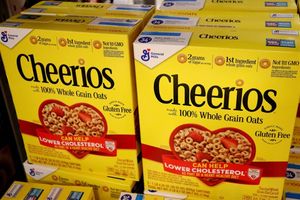The "United States Drug Abuse Testing Market Trends & Forecast 2025" report has been added to ResearchAndMarkets.com's offering.
The United States Drug Abuse Testing Market is expected to reach US$ 3.71 billion by 2033 from US$ 2 billion in 2024, with a CAGR of 7.11% from 2025 to 2033. The U.S. drug abuse testing sector is expanding due to a number of causes, including rising substance misuse, stringent workplace rules, technology developments, robust government support, and more public awareness.
With a strong demand in populated and industrial areas, the drug abuse testing market in the US differs by state due to variations in laws, substance usage rates, and healthcare facilities.
In order to address the persistent substance abuse issues in the country, the drug abuse testing industry in the US is essential. Drug testing has become an essential part of healthcare, workplaces, law enforcement, and rehabilitation facilities due to the increased prevalence of opioid misuse, amphetamine addiction, and other drug dependence. Urine, saliva, hair, and blood analysis are just a few of the testing techniques that the industry provides to meet a range of needs, from routine clinical monitoring to pre-employment screening. This complex need emphasizes how crucial accurate, quick, and dependable drug testing technologies are to the successful detection and treatment of substance abuse.
The development and capabilities of the industry have been greatly influenced by technological breakthroughs. Faster, on-site testing results are made possible by rapid point-of-care devices, allowing for prompt interventions. Saliva-based testing are one example of an innovation that offers less intrusive possibilities, increasing user comfort and compliance. Furthermore, data accuracy and reporting efficiency have increased with the integration of digital platforms and AI-driven analytics. In addition to increasing detection rates, these advancements increase accessibility, enabling drug testing in more settings, including remote workplaces, community organizations, and schools. Additionally, the growing use of multiplex testing panels allows for the simultaneous screening of many substances, providing thorough information in a single test.
Government programs and regulatory frameworks are crucial in promoting industry adoption. Strict testing procedures are enforced in safety-sensitive industries by organizations like the Department of Transportation (DOT) and the Substance Abuse and Mental Health Services Administration (SAMHSA), guaranteeing workplace safety and compliance. Campaigns to raise public awareness of the risks associated with substance abuse also increase demand in the medical and educational fields.
But there are still issues like cost barriers, testing accuracy, and privacy concerns. Notwithstanding these obstacles, the U.S. drug abuse testing sector is well-positioned for long-term growth and significant contributions to public health and safety thanks to continuing advances, regulatory backing, and societal emphasis on substance addiction prevention.
Key Factors Driving the United States Drug Abuse Testing Market Growth
Increasing Rates of Substance Abuse
One of the main factors propelling the U.S. drug abuse testing market is the rising incidence of substance addiction, particularly with regard to opioids, stimulants, and newly developed synthetic substances. The need for early detection and ongoing monitoring has increased due to rising addiction rates, overdose incidents, and drug-related health complications. Effective drug testing is essential for identifying and handling substance misuse cases by law enforcement, rehabilitation facilities, employers, and healthcare professionals.
The significance of testing in preventing drug abuse is further emphasized by public health programs and awareness campaigns. This expanding need across multiple sectors makes drug misuse testing crucial for improving treatment outcomes, minimizing relapse, and enhancing safety. As a result, the market keeps growing as more businesses adopt strict screening procedures to address this urgent problem.
Strict Guidelines for Drug Testing in the Workplace
The market for drug abuse testing in the United States is expanding due in large part to regulatory requirements. Federal and state organizations like the Department of Transportation (DOT) and the Occupational Safety and Health Administration (OSHA) enforce stringent drug screening regulations on industries like manufacturing, transportation, healthcare, and construction.
The purpose of these rules is to guarantee worker safety in high-risk work environments. To ensure compliance and lower the risk of accidents, employers are required by law to perform pre-employment and random drug tests. Organizations are being pushed to invest in trustworthy drug testing solutions by growing worries about liability, insurance prices, and worker safety. Therefore, the changing regulatory environment is essential to increasing the use of drug testing across the country.
Technological Developments and Innovations
Technological developments in drug misuse testing are revolutionizing the market by increasing ease, speed, and accuracy. On-site testing with prompt results is made possible by rapid point-of-care devices, which is essential for prompt interventions. Saliva and hair tests are less invasive techniques that improve user compliance and expand the usage of testing outside of clinical settings. Multiplex testing panels increase efficiency and lower costs by detecting multiple substances at once.
Furthermore, data management, accuracy, and regulatory compliance are enhanced by the combination of artificial intelligence and digital reporting platforms. These developments increase accessibility by enabling the use of drug testing in remote locations, community programs, schools, and workplaces. Deeper market penetration and support for a variety of testing requirements are two benefits of technology's ongoing evolution.
Challenges in the United States Drug Abuse Testing Market
Ethical Issues and Privacy Concerns
In the market for drug abuse tests in the United States, privacy considerations pose a serious obstacle. Drug testing entails gathering private, sensitive health data that needs to be secured by laws like HIPAA. Many people are resistant to testing programs because they fear stigma, prejudice, or confidentiality violations. Healthcare providers and employers must carefully strike a balance between individual rights and safety and compliance requirements. Implementation is further complicated by moral dilemmas pertaining to consent and required testing.
Building trust requires explicit consent processes, secure data handling, and transparent communication. Organizations risk legal issues and decreased employee or patient cooperation if privacy and ethical considerations are not sufficiently addressed, which would restrict the efficacy and scope of drug misuse testing programs.
Privacy Issues and Ethical Problems
The market for drug misuse tests in the United States is severely hampered by privacy issues. Sensitive personal health information is gathered during drug testing and needs to be protected by laws like HIPAA. Many people are afraid of being stigmatized, discriminated against, or having their privacy violated, which can make them oppose testing programs. Employers and healthcare providers must carefully strike a balance between individual rights and the requirements of safety and compliance.
Furthermore, deployment is complicated by ethical concerns about consent and required testing. Building trust requires ensuring open communication, safe data handling, and explicit permission processes. The efficacy and scope of drug misuse testing programs may be restricted if organizations fail to appropriately address privacy and ethical issues, which could result in legal issues and decreased cooperation from staff or patients.
Company Analysis (Overviews, Key Persons, Recent Developments, SWOT Analysis, Revenue Analysis)
- Danaher Corporation
- LabCorp
- Abbott Laboratories
- Quest Diagnostics
- Thermo Fisher Scientific Inc.
- F. Hoffmann-La Roche Ltd.
- Bio-Rad Laboratories Ltd.
- Medtronic Plc.
Key Attributes:
| Report Attribute | Details |
| No. of Pages | 200 |
| Forecast Period | 2024 - 2033 |
| Estimated Market Value (USD) in 2024 | $2 Billion |
| Forecasted Market Value (USD) by 2033 | $3.71 Billion |
| Compound Annual Growth Rate | 7.1% |
| Regions Covered | United States |
Key Topics Covered:
1. Introduction
2. Research & Methodology
2.1 Data Source
2.2 Research Approach
2.3 Forecast Projection Methodology
3. Executive Summary
4. Market Dynamics
4.1 Growth Drivers
4.2 Challenges
5. United States Drug Abuse Testing Market
5.1 Historical Market Trends
5.2 Market Forecast
6. Market Share Analysis
6.1 By Product & Service
6.2 By Sample Type
6.3 By Drug Type
6.4 By End Users
6.5 By States
7. Product & Service
7.1 Analysers
7.2 Rapid Testing Devices
7.3 Consumables
7.4 Laboratory Services
8. Sample Type
8.1 Urine
8.2 Oral Fluid
8.3 Breath
8.4 Hair
8.5 Others
9. Drug Type
9.1 Alcohol
9.2 Cannabis/Marijuana
9.3 Cocaine
9.4 Opioids
9.5 Amphetamine & Methaphetamine
9.6 LSD
9.7 Others
10. End Users
10.1 Drug Testing Laboratories
10.2 Workplaces
10.3 Hospitals
10.4 Rehabilitation Centers
10.5 Academic Institutes and Research Centers
10.6 Others
11. Top 10 States
11.1 California
11.2 Texas
11.3 New York
11.4 Florida
11.5 Illinois
11.6 Pennsylvania
11.7 Ohio
11.8 Georgia
11.9 Washington
11.10 New Jersey
11.11 Rest of United States
12. Value Chain Analysis
13. Porter's Five Forces Analysis
13.1 Bargaining Power of Buyers
13.2 Bargaining Power of Suppliers
13.3 Degree of Competition
13.4 Threat of New Entrants
13.5 Threat of Substitutes
14. SWOT Analysis
14.1 Strength
14.2 Weakness
14.3 Opportunity
14.4 Threats
15. Pricing Benchmark Analysis
15.1 Danaher Corporation
15.2 LabCorp
15.3 Abbott Laboratories
15.4 Quest Diagnostics
15.5 Thermo Fisher Scientific Inc.
15.6 F. Hoffmann-La Roche Ltd.
15.7 Bio-Rad Laboratories Ltd.
15.8 Medtronic Plc.
16. Key Players Analysis
For more information about this report visit https://www.researchandmarkets.com/r/z8d4w0
About ResearchAndMarkets.com
ResearchAndMarkets.com is the world's leading source for international market research reports and market data. We provide you with the latest data on international and regional markets, key industries, the top companies, new products and the latest trends.
View source version on businesswire.com: https://www.businesswire.com/news/home/20250918377025/en/
Contacts
ResearchAndMarkets.com
Laura Wood, Senior Press Manager
press@researchandmarkets.com
For E.S.T Office Hours Call 1-917-300-0470
For U.S./ CAN Toll Free Call 1-800-526-8630
For GMT Office Hours Call +353-1-416-8900





